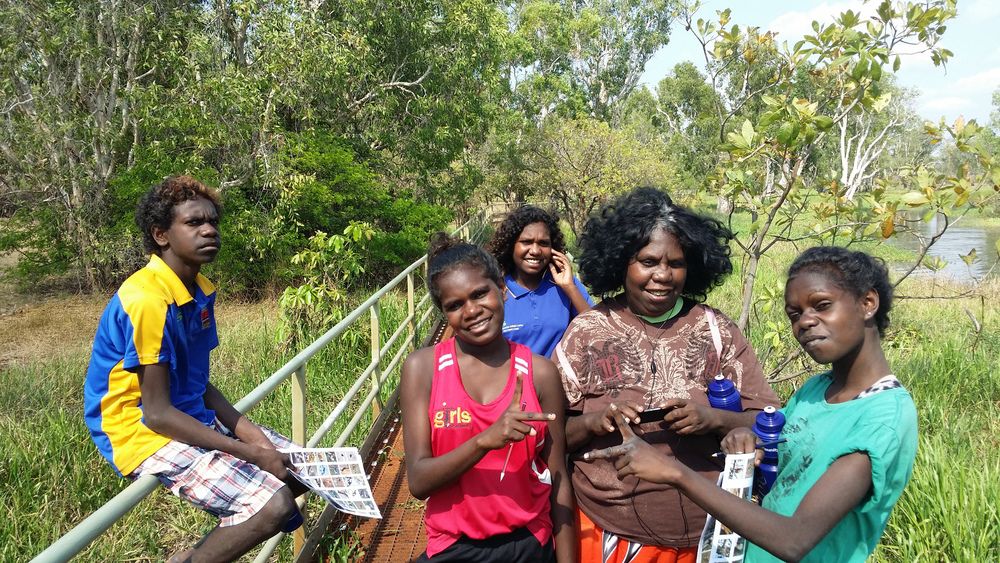Eagle eyes at Bird Week
 The Culture First class from West Arnhem College were leading the flock when it came to finding and identifying birds during a recent trip to Yellow Water as part of Kakadu Bird Week.
The Culture First class from West Arnhem College were leading the flock when it came to finding and identifying birds during a recent trip to Yellow Water as part of Kakadu Bird Week.
By Ashar and Jasper Van De Veerdonk
LAST week the audaciously awesome Culture First class from West Arnhem College participated in the Yellow Water cruise to celebrate Kakadu Bird Week.
The students quickly got into the bird watching mood as more and more magically appeared in front of the tour boat. Our students were often the first to spot birds and identify them on their bird charts, taking pride in their skills and knowledge.
The Culture First students were astonished to find 23 different species of birds on the trip. The number of birds also amazed the many bird watchers, or ‘twitchers’, from around the world who were also on the cruise.
While the Culture First students were busy bird watching they always had someone watch the water to make sure a croc wasn’t getting too close. They always made sure that everyone had their hands and any other body parts in the boat at all times.
The Culture First class enjoyed the cruise, with their teacher Paul Pollock commenting: “Living in Kakadu, home of more than one third of Australia’s bird species, afforded us a great opportunity to get involved in Bird Week.
"The students’ deep knowledge of country was on display, locating and identifying birds with remarkable accuracy. It was a good time all round.”
The Culture First class would like to give a big thanks to Gagadju Lodge and Parks Australia for organising the event and allowing them to participate.
Organised by Parks Australia, Kakadu Bird Week ran from 22-26 September. Visitors took part in a range of tours, events and hands-on scientific monitoring surveys, including surveying in areas not normally accessible to the public.

